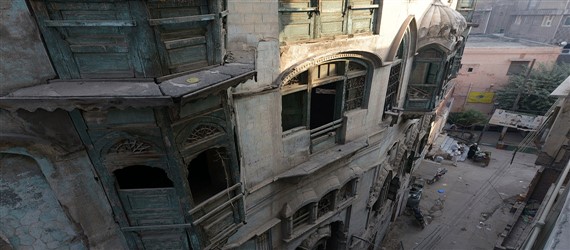Tucked away near the centuries-old Storytellers’ Bazaar, the decaying Pakistani mansions once home to Bollywood superstars are being brought back to life Peshawar.
The ancestral homes of Golden Age heroes Raj Kapoor and Dilip Kumar in the northwestern city are symbols of its link to the world’s largest film industry, but have suffered from decades of neglect.
The region’s archaeology team says it is close to wresting the more than 100-year-old buildings, located in the heart of the historic walled city, from their private owners so they can be restored and turned into museums.
Once an architectural wonder, the family home of Kapoor, who died aged 63 in 1988, is influenced by Mughal empire, Central Asian and British colonial design, featuring ornately carved doors and balconies and gothic-style windows.
Kumar lived in a simpler home down a small lane in a busy market, its entrance faded and its roofless interior heavily damaged.
The actors grew up in a quarter that is home to the fabled Qissa Khwani (“Storytellers'”) Bazaar where travellers would share tales of their adventures.
Kumar, who is now 97, has credited his successful career to his early life in the neighbourhood, where he first learned to narrate.
But like many emerging actors, the pair were enticed away from Peshawar to India’s entertainment centre Bombay, now Mumbai, in the years before the partition of British-ruled India.
The pair even starred alongside each other at the beginning of their careers, in the 1949 hit “Andaz”.
“This is our cultural heritage and we take pride in preserving it. We are very proud that Dilip Kumar and Raj Kapoor were from Peshawar,” said Abdul Samad, director of archaeology and museums in Khyber-Pakhtunkhwa province — of which Peshawar is the capital.
Present-day Indian superstar Shah Rukh Khan, known as the King of Bollywood, also has links to the area but his family home which is still in use has not suffered the same decline.
Across the country, hundreds of pre-partition buildings have been left to ruin or been demolished over the years.
Many had been built by Hindus and Sikhs who left them behind when they fled newly founded Muslim-majority Pakistan for India, archaeology experts say.
SHARJAH24




